Rosin has oozed onto the Oregon scene with a lava-like flow for the last several years, while pens, pods and all-in-ones have pushed their way to the top of dispensary shelves and sales as the preferred method of customer consumption. Headset, a data-driven tech company with a focus on Cannabis, recently reported that “vaporizers” took the second sales spot in August 2025 with $22.6 million in Oregon sales (second only to flower).
With so many companies scaling so quickly, there are bound to be some complications in standard operating procedures and quality assurance. But one complication consumers come across all too often is the improper decarboxylation — a process involving heat to convert THCA to THC — in rosin before it’s placed in these devices. This results in a product that either tastes burnt or crystallizes after just a few hits, leading to an unhomogenized concentrate, uneven vaporization and, in some cases, clogged devices. It’s not ideal when people are paying upward of $70 per unit, and return policies vary from shop to shop.
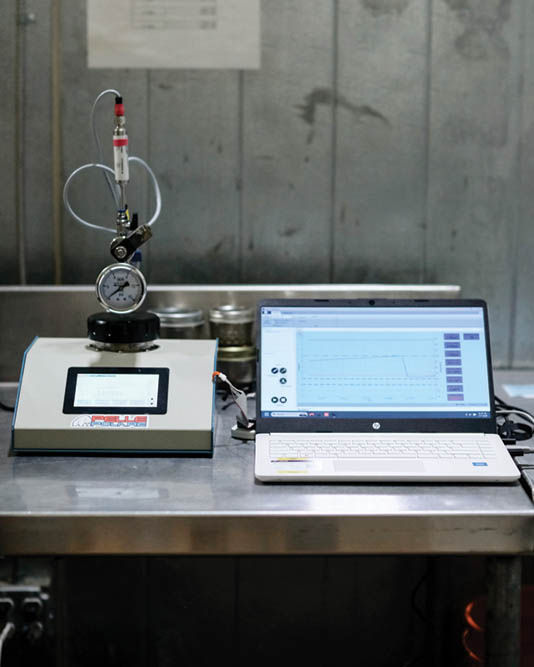
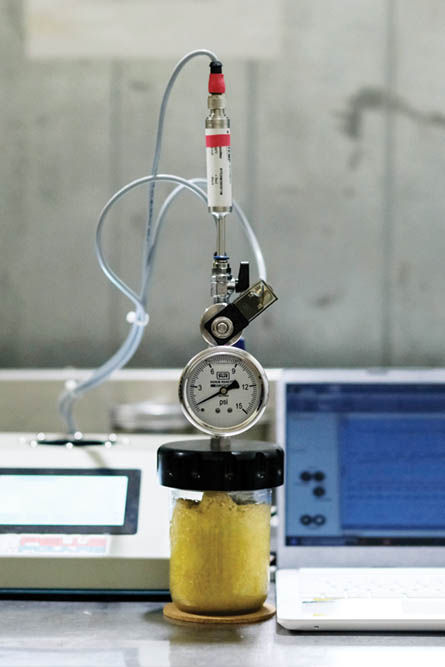
We talked to Michael Waggoner and Joseph Patton of Decibel Farms and sub-brand Forte Solventless to get an inside take on the tech they’ve recently implemented, hoping to prevent this within their products. Waggoner is the company’s solventless tech, with 18 years of full-time hash-making experience and four years at Decibel and Forte. Patton’s been there just as long, working his way up to lab manager, where he and Waggoner have recently brought in a device called the Pelle Polare Reactor that’s designed to take the guesswork out of transforming viscous, dabbable rosin into a consistency that can be consumed in carts, pods and pens.
When decarboxylating for vape devices, Patton divulges, “The difference between each strain is so much more than you would think.” In this team’s experience, for example, fruity strains often finish decarboxylating sooner, while others need longer. No single recipe works when it comes to prepping product for pens, and that’s a problem for scaling production.
With traditional methods of decarboxylation regulation relying heavily on the human eye for visual cues of completeness, like bubbling, there’s enormous room for error. Waggoner tells us that after implementing the Pelle Polare Reactor, they’ve confirmed several theories with their own data, like the fact that bubbling doesn’t equal THC conversion. The endpoint is when the product is “no longer releasing the CO2,” something the human eye can’t quite catch.
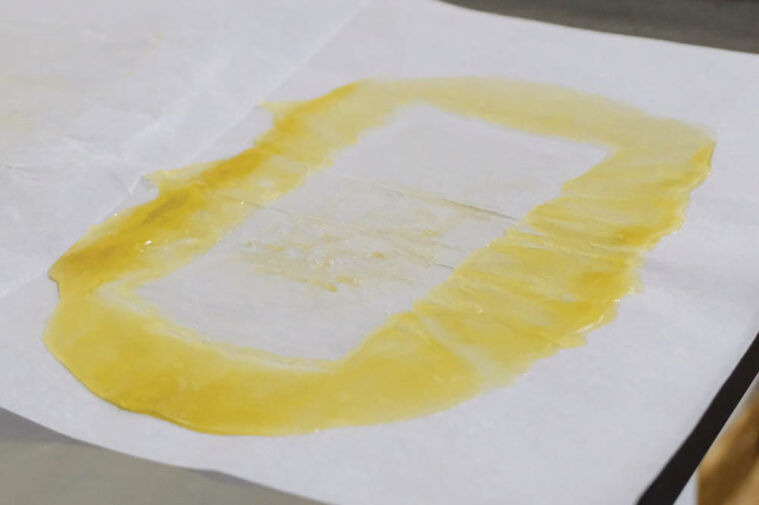
The Pelle Polare Reactor, as Waggoner puts it, “takes all the guesswork out” of rosin decarboxylation. This sealed, computer-linked unit measures CO2 off-gassing and, as Patton adds, eliminates the old “burping” step of manually releasing CO2. With strain-specific data graphs, remote phone access and flavor results that Waggoner says are “immensely better than we have done in the oven,” it’s a tech upgrade that isn’t standard across companies yet.
But Waggoner predicts that “anybody that’s turning rosin into vape pens will be moving to this unit or a larger one,” if they haven’t already adopted something similar. When asked what’s taking so long for the transition to tech-forward facilities, he explains that while the adoption of automated processes reduces labor, they are costly due to a proverbial “Cannabis tax.”
“ We needed a new screen made — just a piece of metal with some holes in it. For any other industry, that’s 20, 25 bucks. For us, it’s $300,” Waggoner said. Those inflated costs have to trickle down to the shelf price of rosin products, which makes it all the more critical that customers spend wisely, not by chasing the most considerable THC number, but by understanding what actually makes a pen worth the premium.
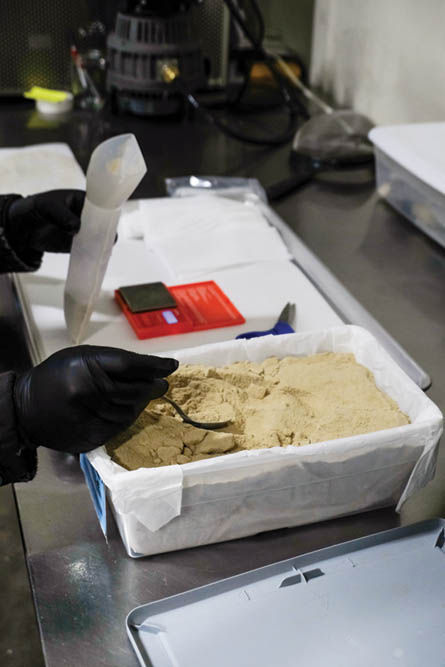
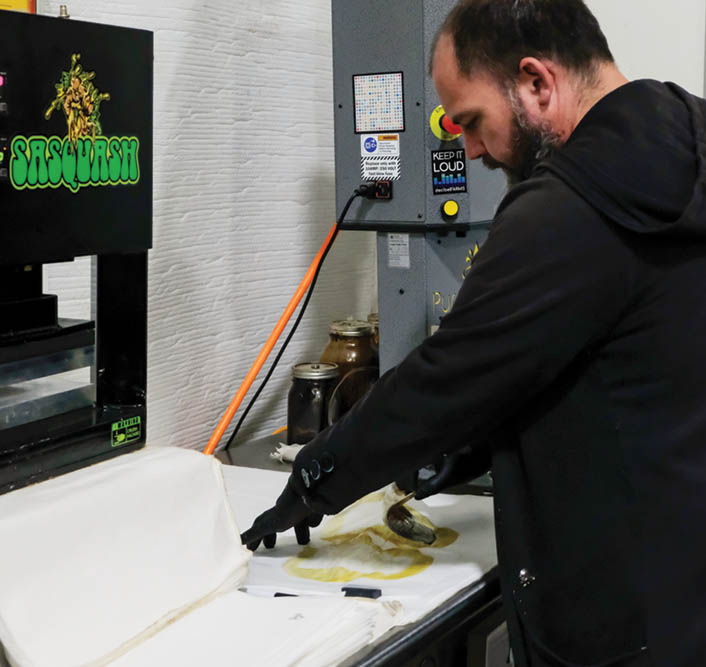
Waggoner is clear: “That THC number, it doesn’t mean anything when you’re buying a pen.” He offers that the focus should be on terpenes and the complete cannabinoid profile. Patton seconds the sentiment, adding that he prefers pens in the 60% to 70% THC range with “8 to 10% terps” for flavor and function. They both agree that the goal is to shift consumers away from potency chasing and toward appreciating the nuances of taste and overall experience.
Looking ahead, the team is energized by the technology on the horizon and advances that reduce labor, fine-tune precision and likely lower costs. In Waggoner’s 18 years of making hash, he tells us that true breakthroughs have been few and far between, but he sees the Pelle Polare Reactor as a genuine leap forward. And while innovative tools may come at a premium today, this team is hopeful that solventless technology will only become more affordable, accessible and standardized in the years ahead.
decibelfarms.com | @decibel.farms | @fortehash | @pelle_polare









